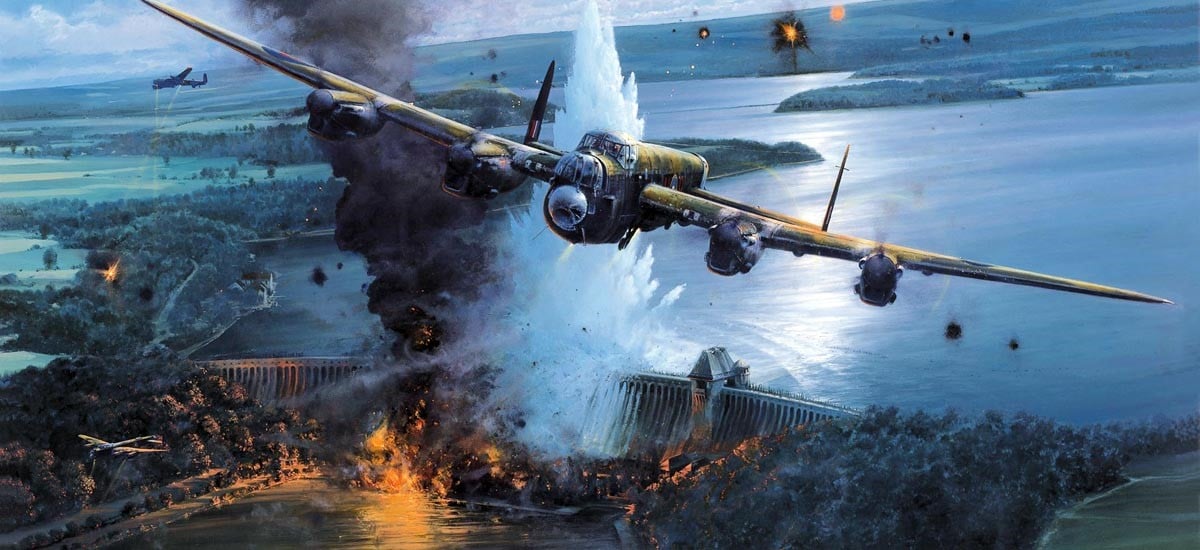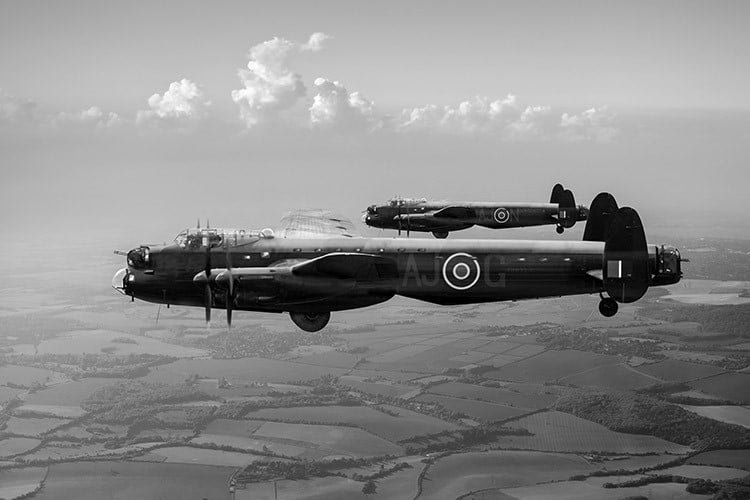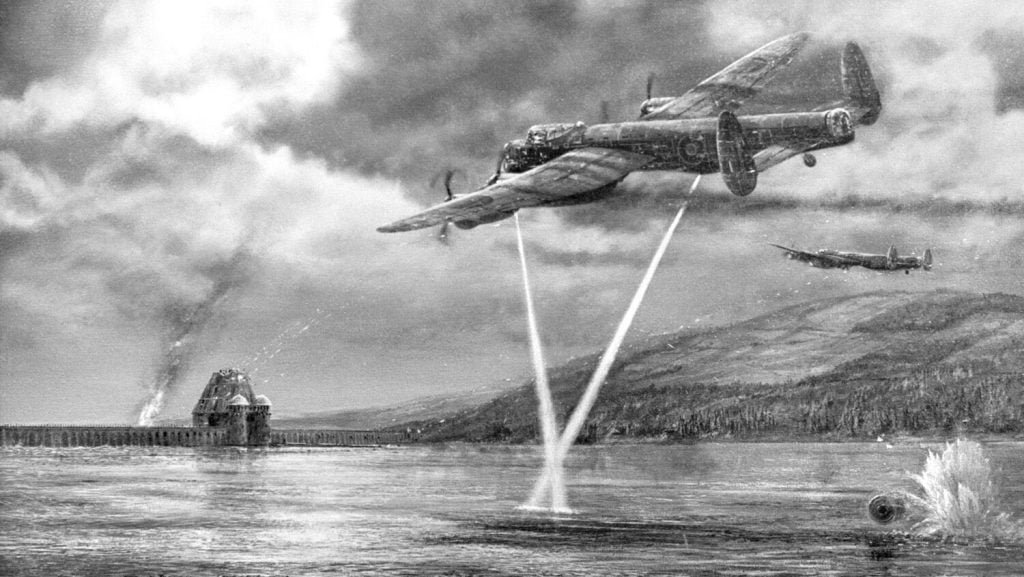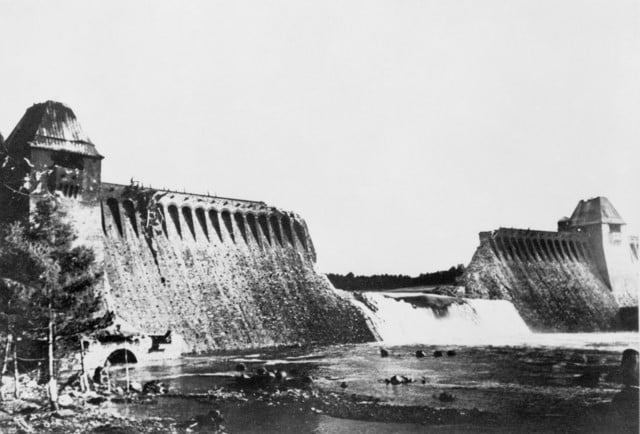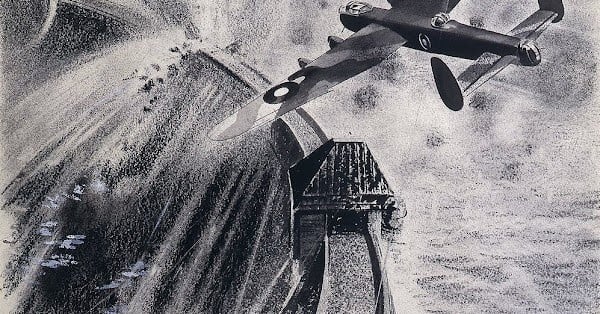The Dambusters Raid, codenamed Operation Chastise, was a daring and historic mission carried out by the Royal Air Force (RAF) during World War II. The objective was to cripple the industrial heartland of Nazi Germany by strategically breaching key dams in the Ruhr Valley. At the heart of this mission were the formidable Avro Lancaster bombers, which played a crucial role in the success of the operation. This article delves into the remarkable capabilities of theLancaster Bombers in the Dambusters Raid, the ingenious engineering behind the “bouncing bomb” used in the raid, and the profound impact of the Dambusters operation on the course of the war.
The Avro Lancaster
The Avro Lancaster was a four-engine heavy bomber that entered service with the RAF in 1942 and quickly became the workhorse of the air campaign against Nazi Germany. Developed from the earlier Avro Manchester, the Lancaster boasted impressive specifications that made it a standout among Allied bombers. With a crew of seven, a maximum takeoff weight of 68,000 pounds, and a range of over 2,500 miles, the Lancaster was a formidable aircraft capable of delivering heavy payloads deep into enemy territory.
Unparalleled Capabilities
The Lancaster’s unique design and powerful Rolls-Royce Merlin engines gave it superior performance compared to its contemporaries. It could reach a maximum speed of 282 mph and a service ceiling of 21,400 feet, allowing it to operate with a high degree of flexibility and survivability. The bomber’s impressive rate of climb, at 720 feet per minute, enabled it to quickly gain altitude and evade enemy defenses.
Adaptability and Versatility
One of the Lancaster’s key strengths was its adaptability. The aircraft could be modified to accommodate a wide range of armaments and specialized equipment, making it a versatile platform for various mission profiles. This adaptability proved crucial during the Dambusters Raid, as the Lancaster’s internal structure was extensively modified to carry the unique “bouncing bomb” designed by Barnes Wallis.
Top 5 Key US Military Airbases Around the Globe
The Ingenious “Bouncing Bomb”
The success of the Dambusters Raid hinged on the development of a specialized weapon, the “bouncing bomb,” conceived by the brilliant British engineer Barnes Wallis. Wallis, an assistant chief designer at Vickers-Armstrongs Limited, was tasked with creating a bomb capable of breaching the heavily fortified German dams.
Overcoming Challenges
Wallis initially proposed a massive 22,000-pound “earthquake bomb” that would be dropped from high altitude. However, the government rejected this plan, citing the need for a lighter weapon that could be delivered more precisely. Wallis then came up with the idea of a rotating, cylindrical depth charge that would skip across the water, clear the torpedo nets, and strike the dam’s wall.
The Bouncing Bomb in Action
The bouncing bomb, officially known as the “Upkeep” mine, was designed to be dropped from a height of just 60 feet while the Lancaster was flying at 240 mph. To achieve this precise delivery, the aircraft was equipped with specialized spotlights that would converge when the bomber was at the optimal height. The bomb’s unique spinning motion and careful timing were crucial to its success in breaching the dams.
The Dambusters Raid
The Dambusters Raid, launched on the night of May 16, 1943, involved three formations of Avro Lancaster bombers tasked with destroying the Möhne, Sorpe, and Eder dams in the Ruhr Valley. The mission was a complex and meticulously planned operation that required exceptional piloting skills, navigational accuracy, and bravery from the aircrew.
Formation One: Targeting the Möhne Dam
The first formation, consisting of nine Lancasters, was responsible for destroying the Möhne Dam, a critical source of hydroelectric power and water supply for the region. After weathering intense anti-aircraft fire, the formation successfully breached the dam, causing catastrophic flooding that devastated the surrounding area.
Formation Two: Attacking the Sorpe Dam
The second formation, comprising five Lancasters, was tasked with destroying the Sorpe Dam, an earth-filled structure that proved more challenging to breach. Despite their efforts, the Sorpe Dam sustained only minor damage, and the mission to destroy it was ultimately unsuccessful.
Formation Three: The Mobile Reserve
The third formation, which took off two hours later than the others, served as a mobile reserve. Their role was to target any dams that the previous formations had failed to destroy. However, by the time they reached the Ruhr Valley, the Möhne and Eder dams had already been breached, and the third formation’s services were not required.
The Aftermath and Impact
The Dambusters Raid was a significant tactical and psychological victory for the Allies, despite the heavy losses suffered by the RAF. The successful breaching of the Möhne and Eder dams disrupted the industrial production and water supply in the Ruhr Valley, a crucial industrial heartland for the Nazi war machine.
Temporary Setback for the Germans
While the flooding and damage caused by the raid were substantial, the Germans were able to repair the dams relatively quickly, mitigating the long-term impact on their military-industrial complex. Nevertheless, the Dambusters Raid remained a significant morale boost for the British public, who were inspired by the bravery and skill of the RAF crews.
The Legacy of the Dambusters Raid
The Dambusters Raid has become one of the most iconic and celebrated military operations of World War II. The heroic exploits of the Lancaster crews, the ingenious engineering behind the “bouncing bomb,” and the daring execution of the mission have cemented the Dambusters Raid as a legendary chapter in the annals of aviation history.
4 Top Private Air Forces Assisting US Military Training
Conclusion
The Dambusters Raid stands as a testament to the crucial role played by the Avro Lancaster bomber and the ingenuity of British engineering during World War II. The Lancaster’s exceptional capabilities, combined with the innovative “bouncing bomb” and the unwavering courage of the RAF crews, made this daring mission a remarkable success, despite the heavy losses. The legacy of the Dambusters Raid continues to inspire and captivate audiences, serving as a symbol of the human spirit’s ability to overcome seemingly insurmountable challenges.
FAQs
1. Why was the Lancaster bomber important?
Despite the Halifax being a strong contender, the Lancaster emerged as the most effective British heavy bomber of World War II, significantly outperforming its rival in terms of bombs dropped per man-hour invested in production and maintenance.
2. How many Lancaster bombers took part in the Dambusters raid?
The raid, known as Operation Chastise, took place on the night of May 16/17 and involved 133 aircrew members piloting 19 specially modified Lancaster bombers.
3. What Lancasters were used in the Dambusters movie?
To closely replicate the Lancaster B Mk III (Type 464 Provisioning) aircraft used in the 1943 Dam Buster raid, three Mk 7s (NX673, NX679, and RT686) underwent special modifications at Hemswell by a team from A.V.
4. What were the success of the Lancaster bomber?
The Lancaster was the backbone of RAF Bomber Command and the most effective bomber of World War II. Lancaster crews participated in 156,000 missions, delivering 618,378 tons of bombs on targets in Germany and Nazi-occupied Europe.
5. Was Dambusters Raid a success?
The raid successfully breached two dams, leading to significant chaos and loss of life.
